#eastern tent moth
Text
the first eastern tent caterpillars of the season decided to show up the evening before a big storm, so I just spent the last 30 minutes running around outside in my pajamas, collecting the little shits in a tupperware container so I could deposit them in the pear tree in front of my house.
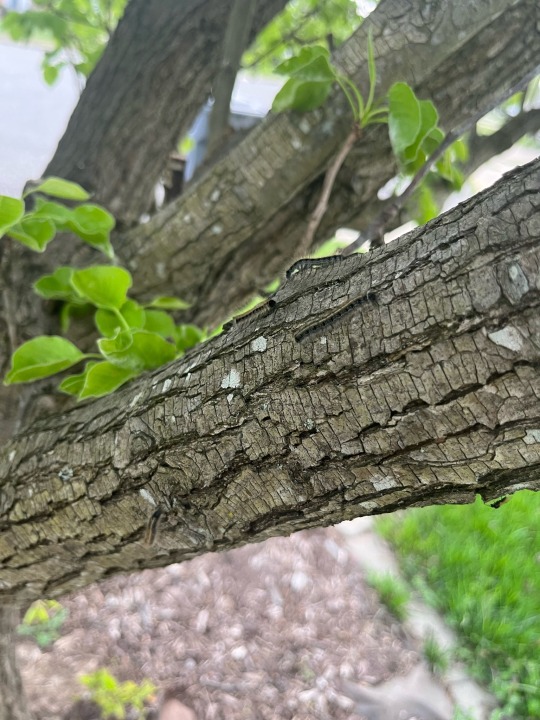
here’s the cute little bastards. they’re very social creatures, so it’s alright to put em all together. they’re typically considered a “pest species” but they don’t gather in very large groups where I live, so the pear tree won’t be burdened.
I know I didn’t have to go out of my way for them, but they are one of my favorite parts of spring. and plus they’re good native bugs for good native birds and also they’re just really goddamn adorable.
I’m gonna start a Caterpillars I Put on the Pear Tree tally, because last year there was quite a lot. today marks just 4, but I’ll be going out again tomorrow.
#caterpillars put on the pear tree tally#also shoutout to my neighbors who share said tree for letting me do this for the two springs I’ve lived here#bugblr#insect#insects#caterpillar#caterpillars#eastern tent caterpillar#eastern tent moth#native bug species#bug#bugs#insect photography
2 notes
·
View notes
Photo
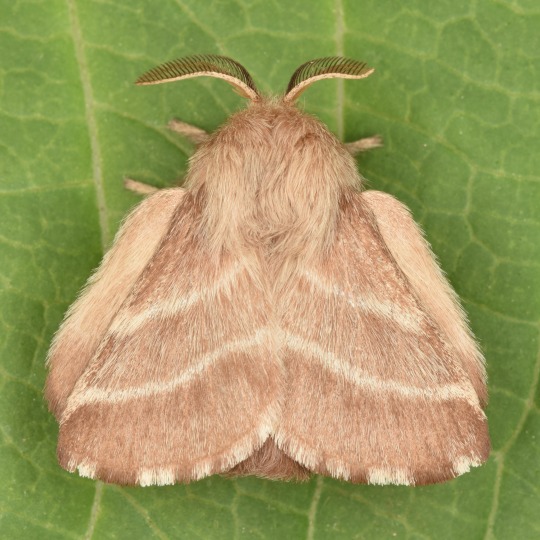


Eastern Tent Caterpillar Moth - Malacosoma americana
483 notes
·
View notes
Note

No id needed for this little dude, just wanted to share this little guy I saw in my grandpa's driveway. Moved them to a tree in the yard so they wouldn't get run over or anything :)
I'm glad you kept this child from becoming a pancake :) now they can become a beautiful moth instead....
#unalive-drawer#insects#bugs#submission#moth#eastern tent caterpillar moth#eastern tent caterpillar#caterpillar#larva
89 notes
·
View notes
Text
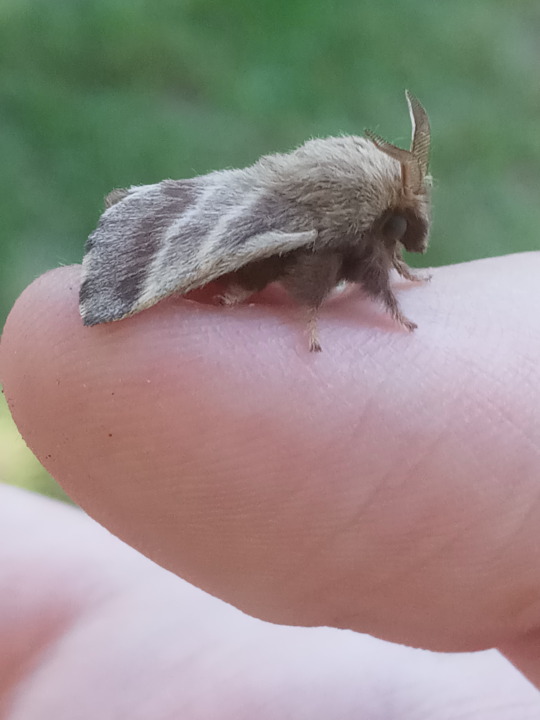

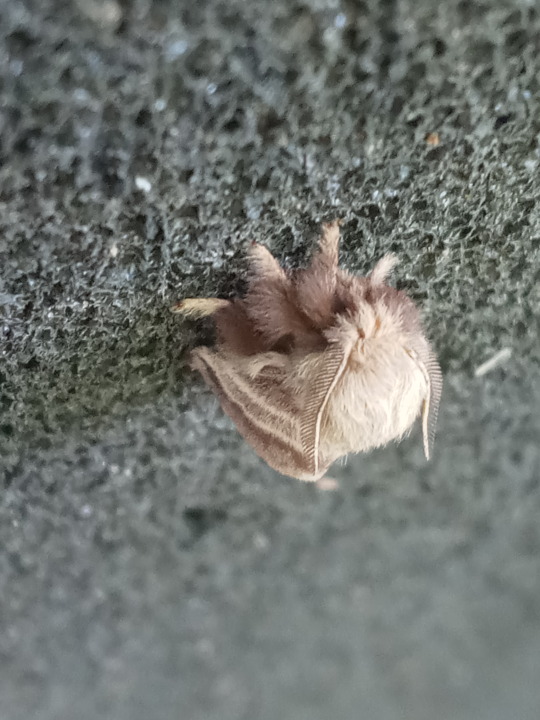
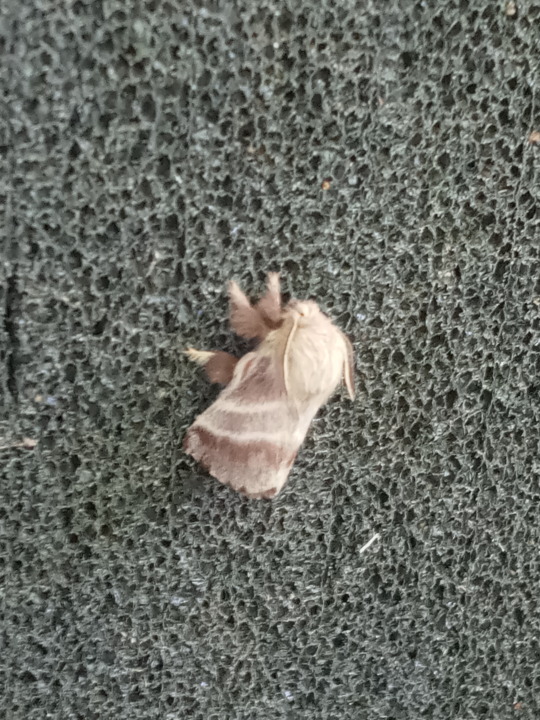
A fluffy little guy! (Likely Malacosoma americanum)
#Eastern tent caterpillar moth#Lappet moth#Lasiocampidae#Moth#Moths#Lepidoptera#Insects#Insect#Bugs#Photo#Photos#Wasp House Sights#Bug
248 notes
·
View notes
Photo

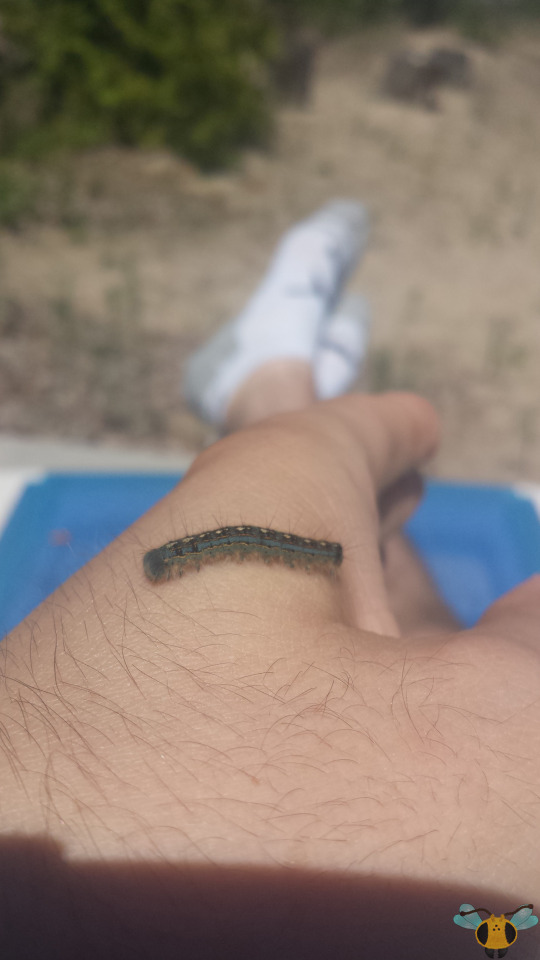
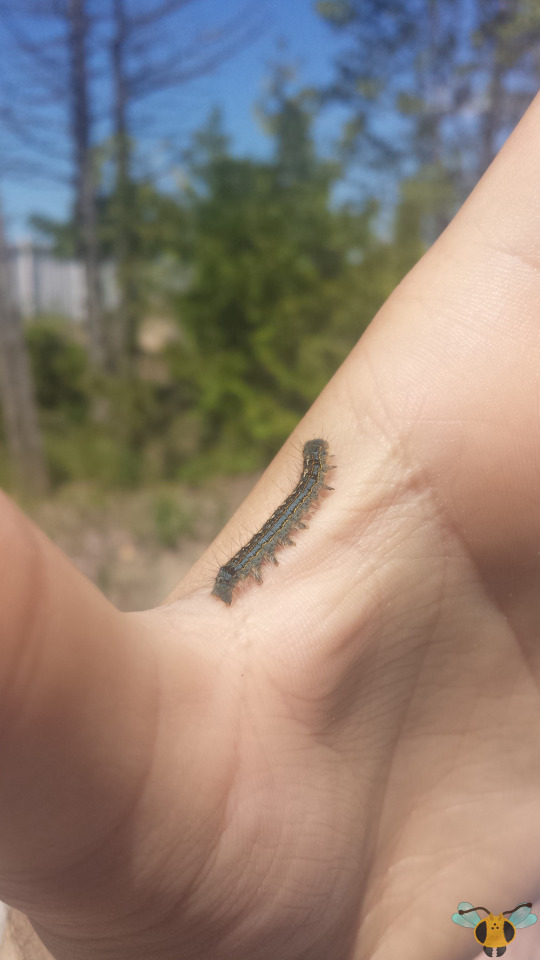
Eastern Tent Caterpillar and Forest Tent Caterpillar - Malacosoma americana & Malacosoma disstria
At first glance, these two insects might be mistaken for each other, leading to much confusion and speculation over how worried one should be over the surrounding foliage! So, which insect is which? Picture 1 gives a glimpse at the Eastern Tent Caterpillar while Pictures 2 and 3 are of the Forest Tent Caterpillar. They easiest way to tell them apart is to look at the line going across their backs from head to abdominal tip. The Eastern Caterpillar’s dorsal line is a firm, solid line while the Forest Caterpillar’s line is separated across body segments. Furthermore, the Forest Caterpillar’s body has the appearance of greater predominance of blue while the Eastern Caterpillar’s blue is more obscured by the hairs (with golden hues) dotted along the body. Finally, the Eastern Caterpillar has a dark colored face and the Forest Caterpillar has a bright face of a bluish hue. Those are the physical differences, but there are also differences in their nesting habits which are discussed below. For now, whichever Caterpillar you find on your travels, handle with care as the hairs have the potential to be irritating on contact with skin. Nothing happened to me when I handled the Forest specimen, but I still advice caution. When it comes to hairy Caterpillars and their effects, there’s a world of difference between Woolly Bears and White-Marked Tussock Caterpillars! The insects of today’s post are somewhere in the middle. Now about those nesting habits...
When it comes to Tent Caterpillars, they are quite social and tend to group up within silken structures (sadly not seen here) near to the foliage they eat. Unlike Spindle Moth Caterpillars which use their silk to bind plants together, Tent Caterpillars use available structures on trees and plants as foundations foor their silk. Eastern Caterpillars spin true tents to live in that are among the largest within Lasiocampidae (a Moth family branch), while Forest Caterpillars create mats and paths with their silk, lining trees with that for adhesion while they feed. The former do share some habits of nest construction with the aforementioned Spindle Caterpillars: build it with sunlight in mind to ensure beneficial heat, and use the nest to avoid predation. However, these Caterpillars here may have gotten lost or fell from their tree. What you see in the pictures before you isn’t the norm, which tends to be outbreaks that congregate on foliage, leading to voracious feeding! Isolation tends to happen when it’s time to pupate (grouping up while in a vulnerable state would just be an invitation for a hungry predator) or if individuals fall from a tree when silk production thins out , especially for the Forest Caterpillar. Silk may thin out temporarily, but on the final instar, every bit of silk that was conserved goes into cocoon production.
The Forest Tent Caterpillar’s pictures were taken on July 2, 2016 in Wasaga and the Eastern Tent Caterpillar’s picture was taken June 10, 2017 at the Royal Botanical Gardens; both insects were captured with a Samsung Galaxy S4. Next week, a third Caterpillar making a guest appearance in the Eastern Tent Caterpillar’s picture (the Fall Cankerworm) will be explored.
#jonny’s insect catalogue#ontario insect#caterpillar#eastern tent caterpillar#forest tent caterpillar#eastern tent caterpillar moth#forest tent caterpillar moth#tent caterpillar#moth#lepidoptera#insect#wasaga#royal botanical gardens#july2016#2016#june2017#2017#nature#entomology#fall cankerworm#invertebrates
5 notes
·
View notes
Text

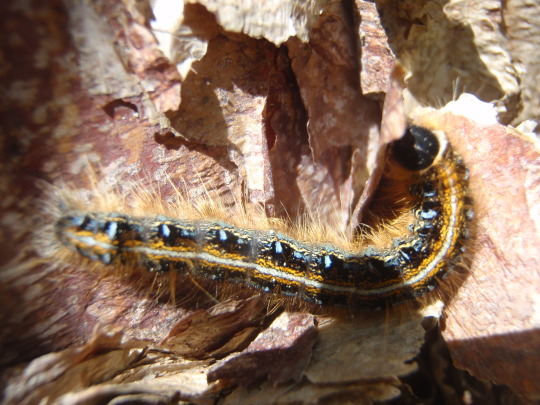

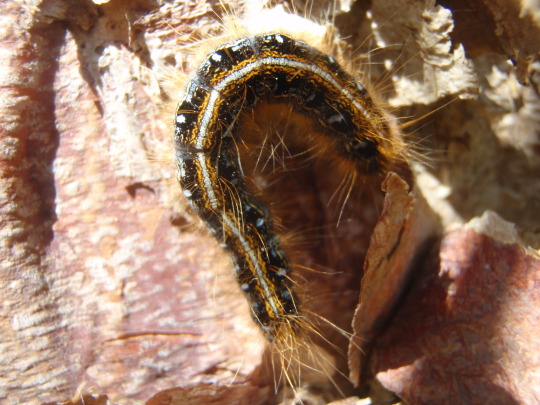

Malacosoma americanum (eastern tent caterpillar) i found this guy on a tree after not seeing any caterpillars this year :) i was so happy
photo by me
#Malacosoma americanum#eastern tent caterpillar#bugblr#bug#bugs#insect#insects#caterpillar#moth#larvae#me
3 notes
·
View notes
Text

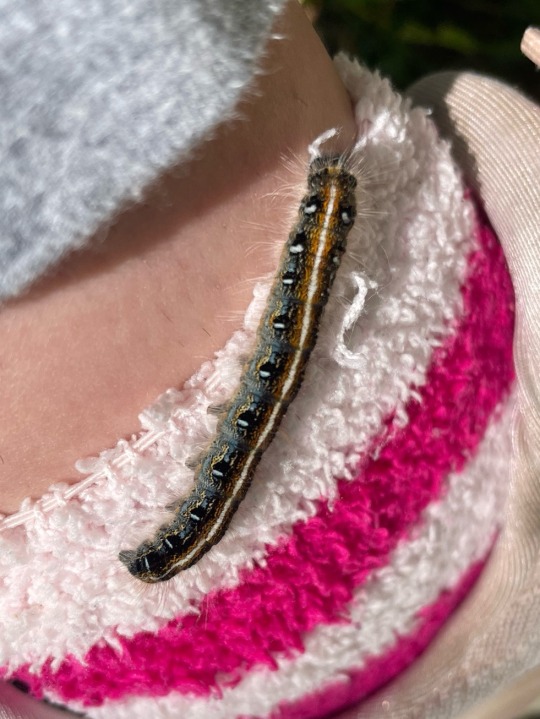
little walk buddy
0 notes
Text
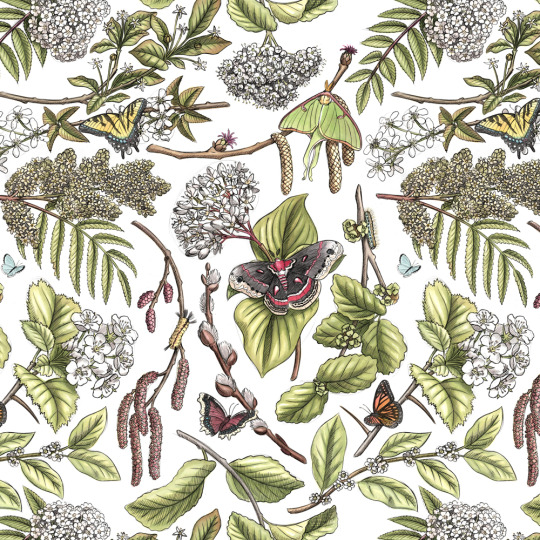
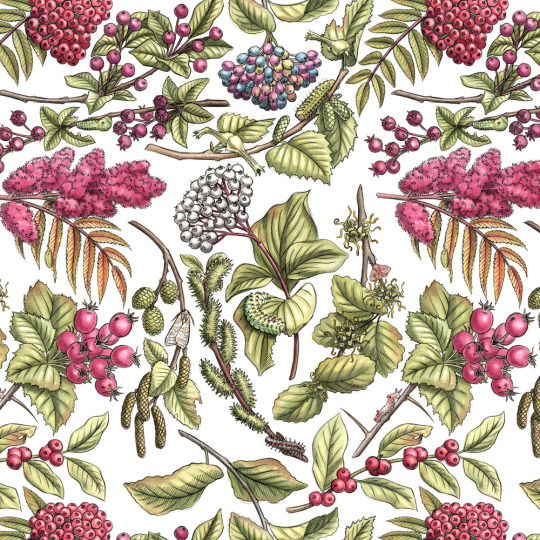
New England native shrub patterns, in spring and autumn. Featuring some lepidoptera species hosted by the plants, in their larval and adult forms. For a project that's been 4 years in the works… More details soon.
Mountain Holly
Northern Wild Raisin
American Mountain Ash
Shadbush with Eastern Tiger Swallowtail Butterfly
Beaked Hazelnut with Luna Moth
Staghorn Sumac with Spring Azure Butterfly
Red-osier Dogwood with Cecropia Moth
American Witch Hazel with Eastern Tent Moth
Pussy Willow with Mourning Cloak Butterfly
Gray Alder with Banded Tussock Moth
Big-fruit Hawthorn with Viceroy Butterfly
Winterberry Holly
#sketch#watercolor#illustration#art#design#pattern#plants#shrubs#native plants#nature#naturalist#nature journal#jada fitch#maine#new england#wildflowers#berries#lepidoptera#drawing#pencil#moths#butterflies#butterfly#moth#caterpillar#larvae#artist#maine illustrator#nature art#field sketch
269 notes
·
View notes
Text
WHAT MOTHS GHOST WOULD BE🦋🦋🦋🦋🦋

Cumulus: Venezuelan Poodle Moth
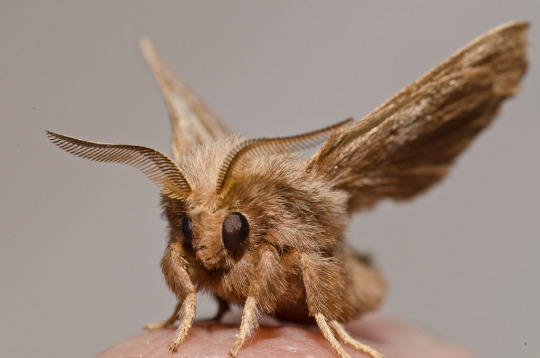
Aurora: Eastern Tent Caterpillar Moth
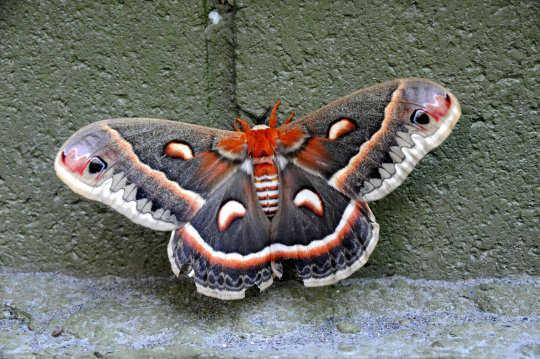
Swiss: Cecropia Moth

Rain: Hawk Moth

Mountain: White-stripe Longtail Moth

Sodo/Dewdrop: Esmerelda Longtail (because it fades from blue-to reddish brown like his element change)

Copia: Rustic Sphynix Moth

Phantom: Black Peppered Moth

Cirrus: Bog Buckmoth
EXTRA:

Secondo: Striped Hawk Moth
#im getting over my fear of insect by looking at butterflies and moths ok#ghost#the band ghost#ghost bc#ghumblr#copia#ghost band#papa emeritus iv#cardinal copia#papa copia#moths#ghouls#nameless ghouls#swiss#sodo#aurora ghoulette#ghoulettes#ghost phantom#cirrus ghoulette#cumulus ghoulette
80 notes
·
View notes
Note
How do the clans react to light pollution? Always wondered why the clans could see the stars when i can barely see them while camping.
Unfortunately... their generation turnover is so much shorter than ours. My mother can remember a time where driving through a rural area meant bug splatter. I don't remember that, but I do remember there being big moths and fireflies when I was little. My younger cousins didn't even know that the silk caterpillar tent we saw on an outing wasn't just plastic pollution until I stopped and explained it.
The three generations in my family is TEN to Clan cats.
It's hard enough for me to communicate to my own family how much they don't have and it blindsided me that they hadn't even seen an eastern tent caterpillar, let alone seen enough to be able to tell them apart from spongy moths. Putting that in the context of TEN generations... it makes me wonder what my parents can't communicate to me. Or what their grandparents couldn't communicate to them.
And what will my cousins say to the next generation of kids in our family? ...what do they take for granted that I can't fathom losing?
So, light pollution
The Clan cats would know it's happening in some capacity, but they would never be able to understand why. Just that humans coming closer and losing the stars is connected, somehow.
Light pollution got suddenly worse between the 1980's to the 2000's in a span of about 20 years, from what I read. An uptick of 40%. In my rewrite's terms that's roughly between the Crusade Era and the Thistle Era. It can't be lost on them that this time of trying to appease the stars is the moment they lost so many of them.
Thinking about it, I can see them doubling their efforts into invading Chelford, spurred by their elders passing on stories of how the expansion of twolegplace started making the stars fade back during the Skyfall Era.
But it would never be an overwhelming, "WE MUST BRING THE STARS BACK" feeling. It would be a knowledge that the stars used to shine brighter, but not much memory of what the sky should look like.
Going to the lake would be breathtaking. It's far from the dense town and the suburb, 3 days trip away. It wouldn't be a perfect sky by human standards, but to the Clan cats? It would be more stars than they'd ever known.
Enough to make them think, maybe this is where the faded StarClan warriors of their elder's stories had been, all along.
#Light pollution#erins give me your geography i can fix your stupid fucking lake#Clan culture#warrior cats
146 notes
·
View notes
Text
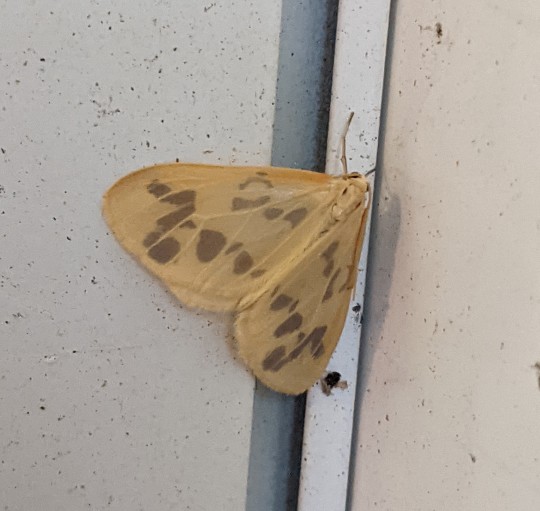





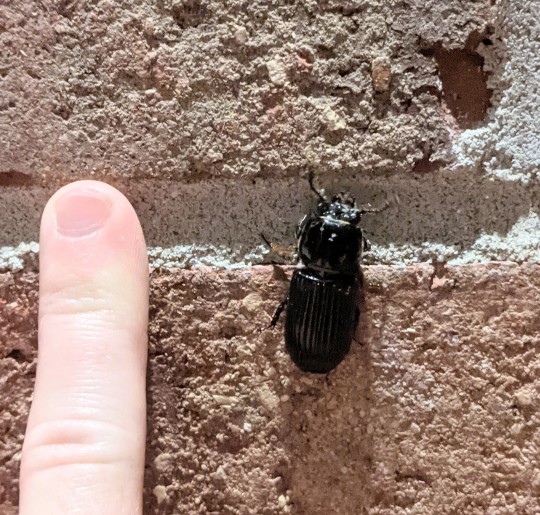
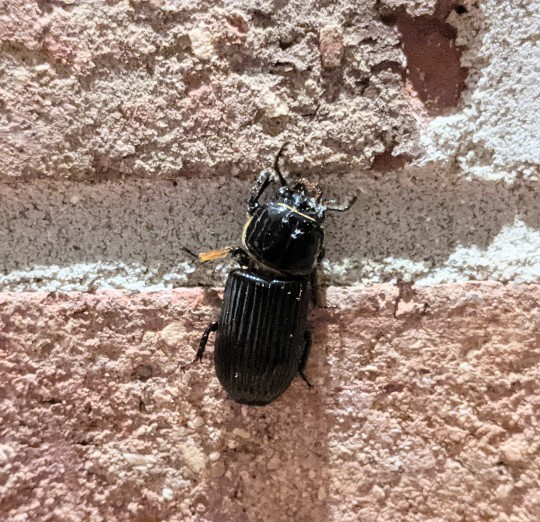
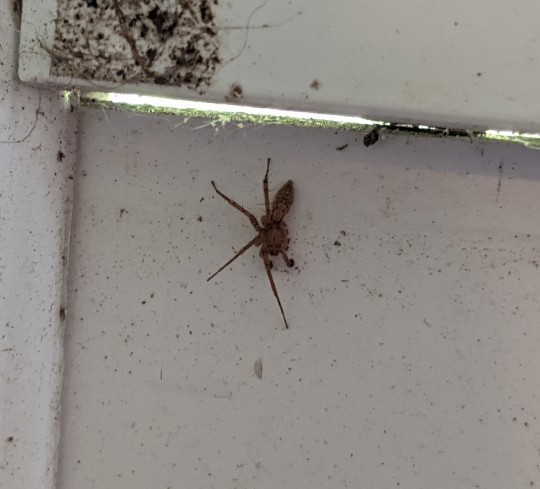
A collection of fine friends I met last week, featuring
Eubaphe mendica, the beggar moth!
Eastern Tent Caterpillar moth!
White-dotted/tawny/rough prominent moth!
A Bessbug/Bess Beetle (Horned Passalus)!
A really unfortunate case of missing legs on what I believe is a type of funnel weaver spider!
Please do correct me if I'm wrong on any of those! @onenicebugperday
105 notes
·
View notes
Text
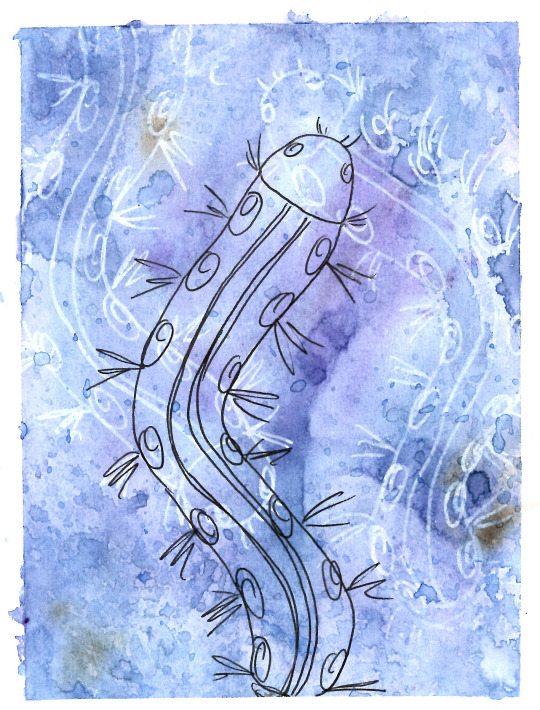
old watercolor piece i did about eastern tent moth caterpillars (my fav for sentimental reasons)
#entomology#bug#cw insects#cw bugs#caterpillar#bug art#insect art#drawing#artists on tumblr#my art#watercolor#painting#traditional art
13 notes
·
View notes
Note
i dont know if youve said it before, but-
what is your favorite species of moth? :]
so to be fully honest I'm not sure. BUT I did recently answer this question to someone else.
I prefer moths that look like moths, if that makes sense. Something like this
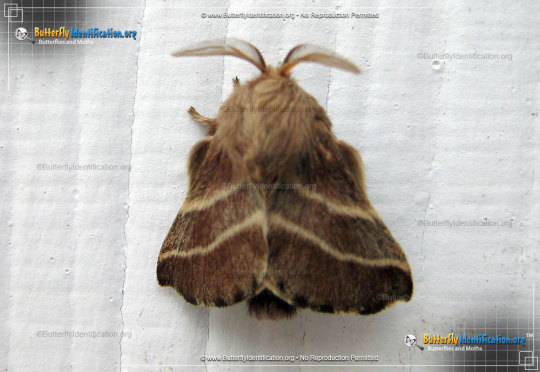
This moth is Moth Shaped (eastern tent caterpillar moth).
On the other hand, something like this

Is not moth shaped and i dislike it (grape plumed moth)
That is incredibly unclear but i hope it helps a bit.
However i do have a moth i think is really neat.
Ascalapha odorata, or the Black Witch moth.
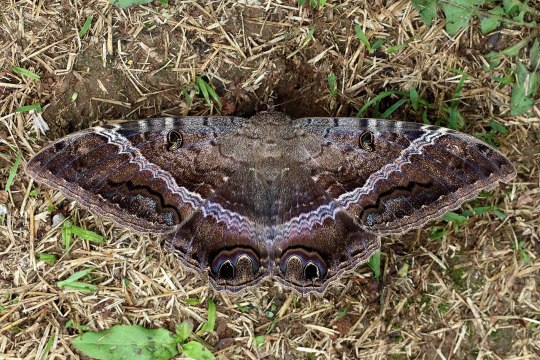
Is native to the southern us, mexico, brazil, the Caribbean, and Hawaii.
The reason this moth is currently my favorite is because of the folklore behind it. Most of my info is from wikipedia sadly 😞
The black witch moth is seen as a harbinger of death or misfortune. It either is the embodiment of a dead person's soul or the omen that kills them. My favorite thing is that in Jamaica it's called a Duppy Bat and that name is just super cool.
That's it, ascalapha odorata is my favorite moth :)
While i have you here let me ramble about something i am headcanoning

This is a moth. Yes, I'm being serious. Look at how the wings fold back, look at how the body by the cockpit (head) is kinda boxy looking just like a moth's "scarf".
The F-14 Tomcat is a moth because it is moth shaped!
8 notes
·
View notes
Text

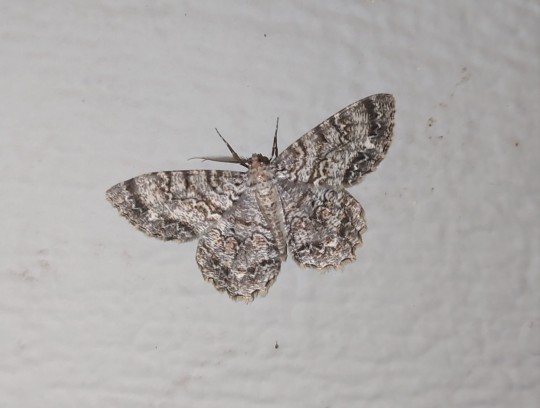

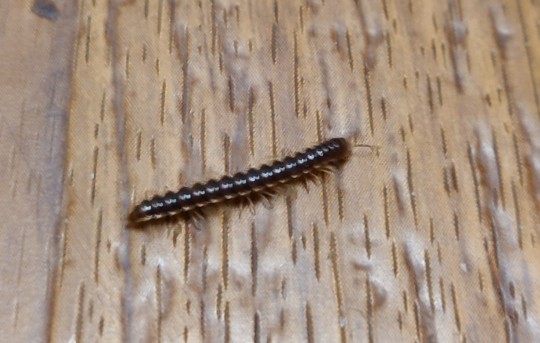
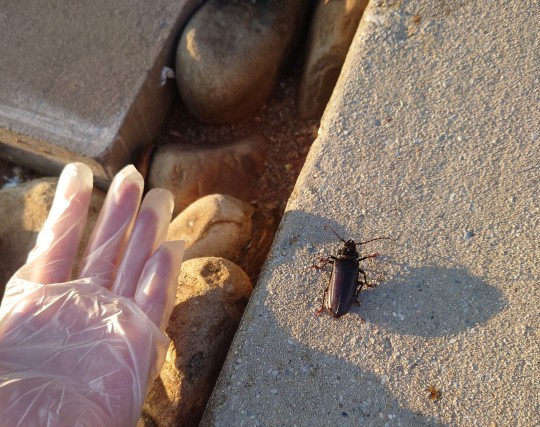

@bluem1st submitted: I have met many lovely buggies lately and they fill me with joy! I'd love if you could ID them. I know the caterpillar is an eastern tent and one of my favorites but the others were new to me. The light colored centipede was so small! Could wrap halfway around a quarter! The big beetle I found at work almost drowned in a rained-in bin. So happy I found them and could get them out! Location is: [removed] (please remove location). I hope seeing them brings others joy too!
A great group of friends! I love the very small but long centipede. They are from the top after the tent caterpillar: a geometer moth but don't know the species offhand, a soil centipede, a greenhouse millipede, and a prionine longhorn beetle, probably a live-oak root borer :)
#animals#insects#bugs#submission#beetle#centipede#caterpillar#moth#eastern tent caterpillar#eastern tent caterpillar moth#geometer moth#myriapods#soil centipede#millipede#greenhouse millipede#longhorn beetle#prionine beetle#live oak root borer
96 notes
·
View notes
Text

EASTERN TENT CATERPILLAR SEASON STARTS NOW
#eastern tent caterpillar#Caterpillar#Caterpillars#Moth Caterpillar#Lepidoptera#Moth#Moths#Insects#Insect#Bugs#Bug#Photo#Photos#Arthropods#Entomology#Wasp House Sights
13 notes
·
View notes
Text


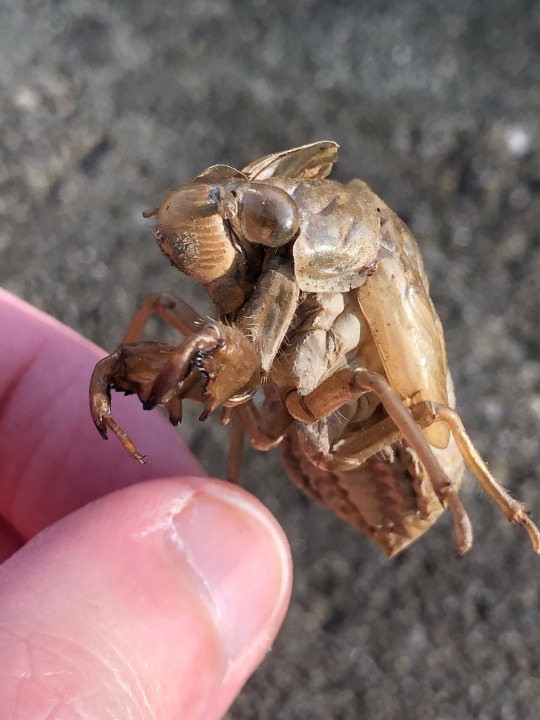

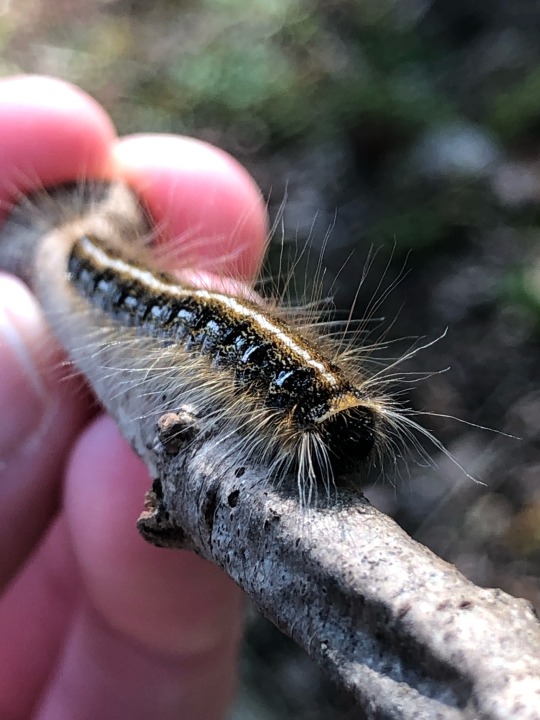


I don’t usually post personal wildlife photos, but it’s beginning to warm up and the little critters around here are coming out in full swing. I lived in a very dry climate at high altitude for a few years and almost forgot what it was like to live in a much warmer, more tropical place that houses a lot more animals. I can’t explain the joy I feel whenever I go outside and look for things! I’m going to try to identify each critter, left to right, top to bottom. If I’ve misidentified any of them, please let me know! I also apologize for the two photos taken behind dirty windows. If I’d known I was going to have guests, I would’ve wiped them down first.
1st pic: Eastern Wormsnake (Carphopis amoenus amoenus).
2nd pic: Metric Paper Wasp (Polistes metricus).
3rd pic: Cicada nymph shell, unsure of which species unfortunately, if at all that can be determined from shell alone.
4th pic: A young Long-Palped Ant Mimic Sac Spider maybe? (Castianeira longipalpa)
5th pic: Eastern Tent Caterpillar (Malacosoma americanum).
6th pic: Luna Moth (Actias luna).
7th pic: Pseudopolydesmus serratus. As far as I can find there is no common name for it!
#bugblr#wasps#snake#luna moth#caterpillar#millipede#cicada#spider#So glad that winter’s over.#corriethosaurus
17 notes
·
View notes